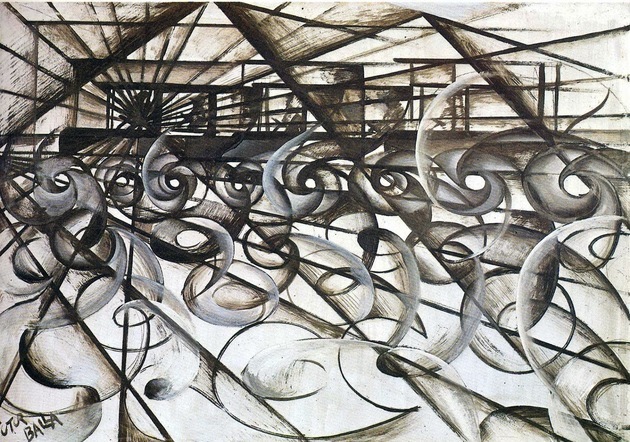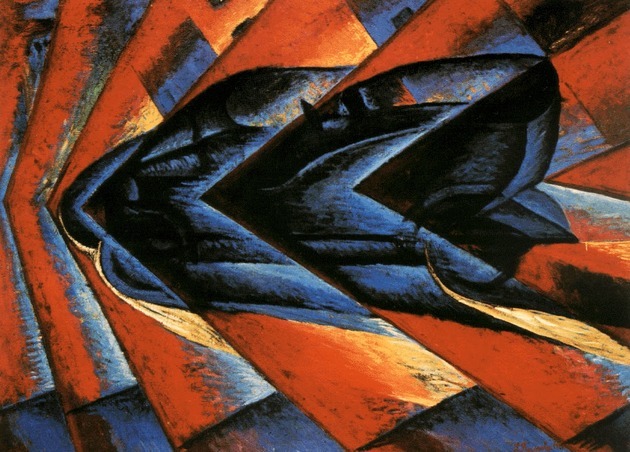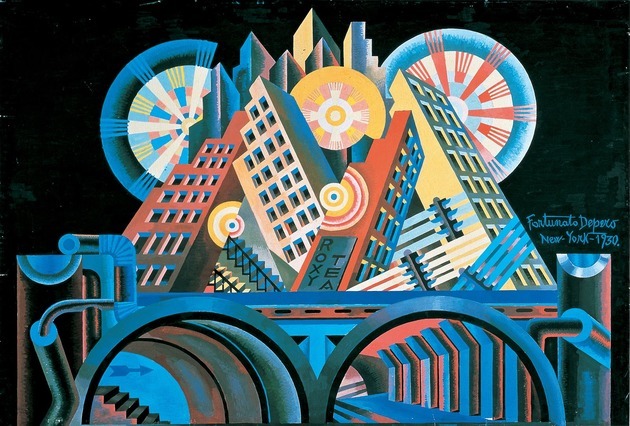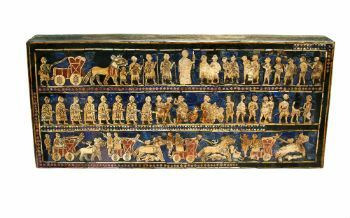O futurism it represented a literary and artistic movement whose main characteristic was the valorization of technology and speed.
This current is part of the European artistic avant-gardes that emerged at the beginning of the 20th century. It influenced literature, painting, sculpture, music and other aspects of the arts.
Origin of Futurism
Futurism had an intense relationship with literature, arising from the Futuristic Manifesto, idealized by Italian writer and poet Filippo Tommaso Marinetti.

He published it on February 20, 1909, in the newspaper "Le Figaro", a somewhat controversial note starting the movement.
"We will destroy museums, libraries, academies of all kinds, we will fight against moralism, feminism, all opportunistic or utilitarian cowardice.
We will sing the great crowds excited by work, pleasure, and turmoil; we will sing the song of the tides of revolution, multicolored and polyphonic in modern capitals; we will sing the vibrant nocturnal fervor of arsenals and burning shipyards with violent electric moons; greedy train stations that devour smoke-feathered serpents; factories hang in clouds by the crooked lines of their smoke; bridges that span rivers, like giant gymnasts, flashing in the sun with a flash of knives; adventurous steamships sniffing the horizon; broad-chested locomotives whose wheels traverse the tracks like the hulls of huge steel horses braked by pipelines; and the smooth flight of planes whose thrusters chatter in the wind like ribbons and seem to applaud like an excited audience."
(excerpt from Futuristic Manifesto)
The futurist movement predominated mainly in France and Italy, where artists identified with fascism.
Having several members of the group adhered to the fascist party, it weakened after World War I, despite having been taken up again in Dadaism.
Main features of futurism
We can highlight as main features of the futurist movement:
- valorization of speed and dynamism;
- exaltation to technology;
- ideological link with fascism;
- break with the past;
- use of advertising and typography;
- tendency to justify violence through militarism.
The valorization of industrialization and technology as technical progress was evident in Futurism.
Furthermore, the parameters were based on the future, speed, modern life, violence (militarism) and a break with the art of the past.

Another known factor is the use of advertising as the main means of communication. This, especially due to the praise of the typography of that period, in texts that explored the playful, the vernacular language and the use of onomatopoeias.
In their creations, futurists sought to express real movement, indicating the speed exposed by moving figures in space.
Thus, futuristic painting influenced by cubism and the abstractionism, had the pretension of dynamism. When capturing the plastic form, the speed was described by the objects in space.
The inspirations for the colors and light effects of post-impressionism, as well as for the techniques of Cubist compositions, are evident.
Main Artists and Works
In 1910, some artists decided to draw up a futuristic manifesto dedicated mainly to painting. This new document was signed by Umberto Boccioni, Carlo Carrà, Luigi Russolo, Giacomo Balla and Gino Severini.
For them, what mattered most was the representation of movement and the rejection of all types of immobility.
See who were the biggest representatives and some outstanding works.
Giacomo Balla (1871-1958)

Umberto Boccioni (1882-1916)

Luigi Russolo (1883-1947)

Enrico Prampolini (1894-1956)

Nikolay Diulgheroff (1901-1982)

Carlo Carrá (1881-1966)

Fortunato Depero (1892-1960)

Futurism in Brazil
In Brazil, modernist artists like Anita Malfatti (1889-1964) and Oswald de Andrade (1890-1954) had great influences from Futurism, coming to directly contact Marinetti.
We can see these influences in the 22nd Modern Art Week. It highlights the rejection of the past, the cult of the future, the aversion to reproductions and the cultivation of original purity.
However, later, Brazilian artists reformulated the concept of futurism in the country.
Also check out this selection of questions that we have separated for you to test your knowledge: Exercises on European Vanguards.
To learn more about other artistic currents, read:
- Modernism in Brazil
- Modern Art
- Cubism
- Fauvism
- Expressionism
- Surrealism
- Dadaism



